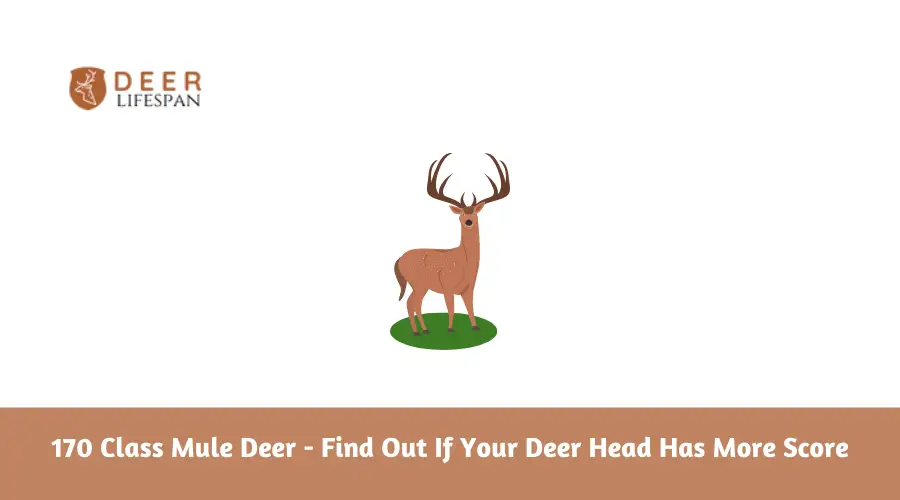While hunting deer, hunters always look for the widely spread horn or antlers. It is pretty challenging to determine a score with an open eye. Therefore, a measuring tool like an inchtape does the task.
It is more difficult to determine a 170-class mule deer score. So, you need to avoid all the erroneous means like open-eye assumptions.
However, we shall disclose all the steps to find a 170-class mule deer score to justify your ultimate result.
170 Class Mule Deer – Find Out If Your Deer Head Has More Score

Measuring a deer antler and estimating the score by the trophy servers is a normal undertaking for the trackers. It could seem to be an unbending undertaking to perform. In any case, with the right contraptions including inch tape, you can do it without facing any difficulties.
Consequently, all you want to do is to follow the means that are referenced beneath to track down the scores from the mule deer. And we firmly ensure you an error-free result.
Prepare The Scalp Of The Deer And A Notebook
After hunting a mule deer, you need to set up the tusks. Generally, what trackers do is cut the horn region straightforwardly following hunting the tusk. Put the entire horn of the deer on a table and begin surveying with tape.
Just subsequent to setting up the prong, take the inch-tape and measure inside the fundamental bar. Eventually what the outcome comes, brings that into note.
Measure All The G Beams
From the place where the focal antler or main beam begins, begin evaluating through an inch-tape. What’s more, note the out and out creeps down. Eventually, notice, there is a little horn that ascents up out of the significant help point. It is called G1.
By and large, it is the most modest prong of a buck’s head. From the most raised characteristic of the G1 tusk, begin evaluating to the farthest uttermost scopes of the G1. You will see a number.
Find the longest tusk on the head that comes from the fundamental shaft which is G2. From the most raised characteristic of it to the getting point alongside the significant shaft, you can begin evaluating the G2. Another horn comes from the G2 tusk, which is the G3.
At this point measure from the most raised spot of it to the completion point. Be attentive, don’t add the G2 prong district. It will be an essential goof in the event that you count this region since it is seen as G2.
Following noticing the overall immense number of prongs’ appraisals, you will see that one of the tusks is passed on to process. That tusk is called G4. Eventually, as different horns, measure this one additionally and note it down.
Measure The Circumferences Of H Spots
There is a measure of four peripheries. The first is H1. You will find the evaluating point where G1 begins and measure the total circumference. After that, note it down. In the H1 point and the joining point of G2, you truly need to check the H2, which is at the point of convergence of the tusk.
From the fundamental shaft, you will join two regions. The G2 and G3 regions are joined by H3, so measure and note the number. At this point interaction the G4 joining region and note it as the H4 outline. In like manner, this is the last point you really need to quantify.
Conclusion
The steps that we mentioned today will help you to find if the deer is 170 class mule deer or the score is higher. All you need to do is to perform the tasks exactly what is written. Before that, you need to learn to determine the G and H spots.
